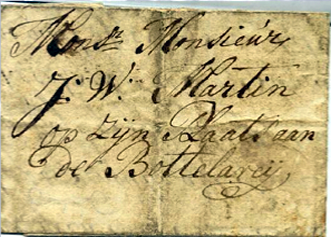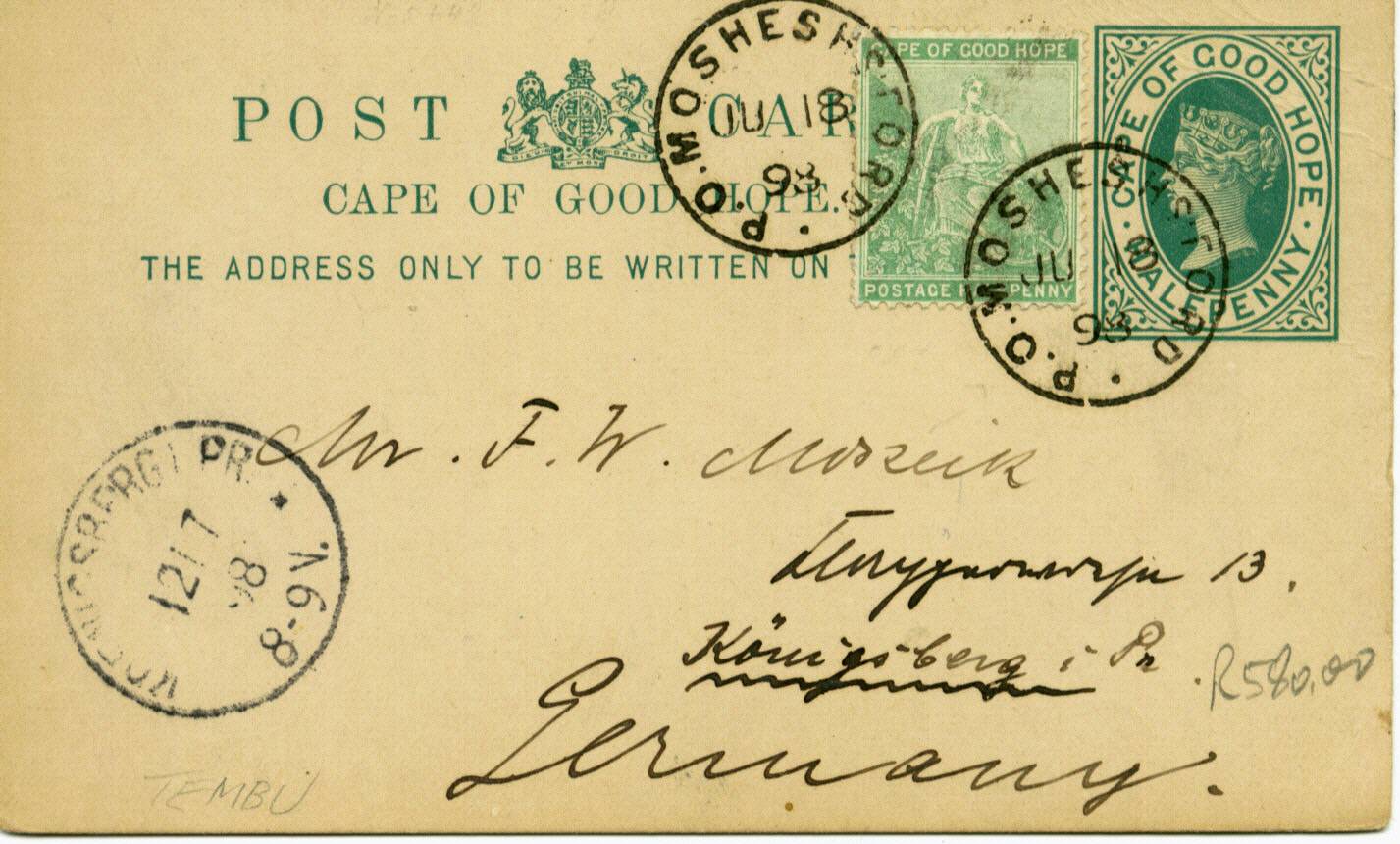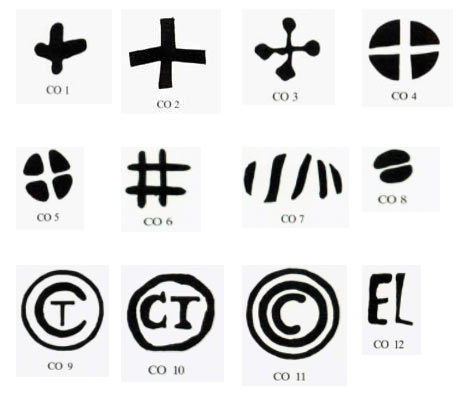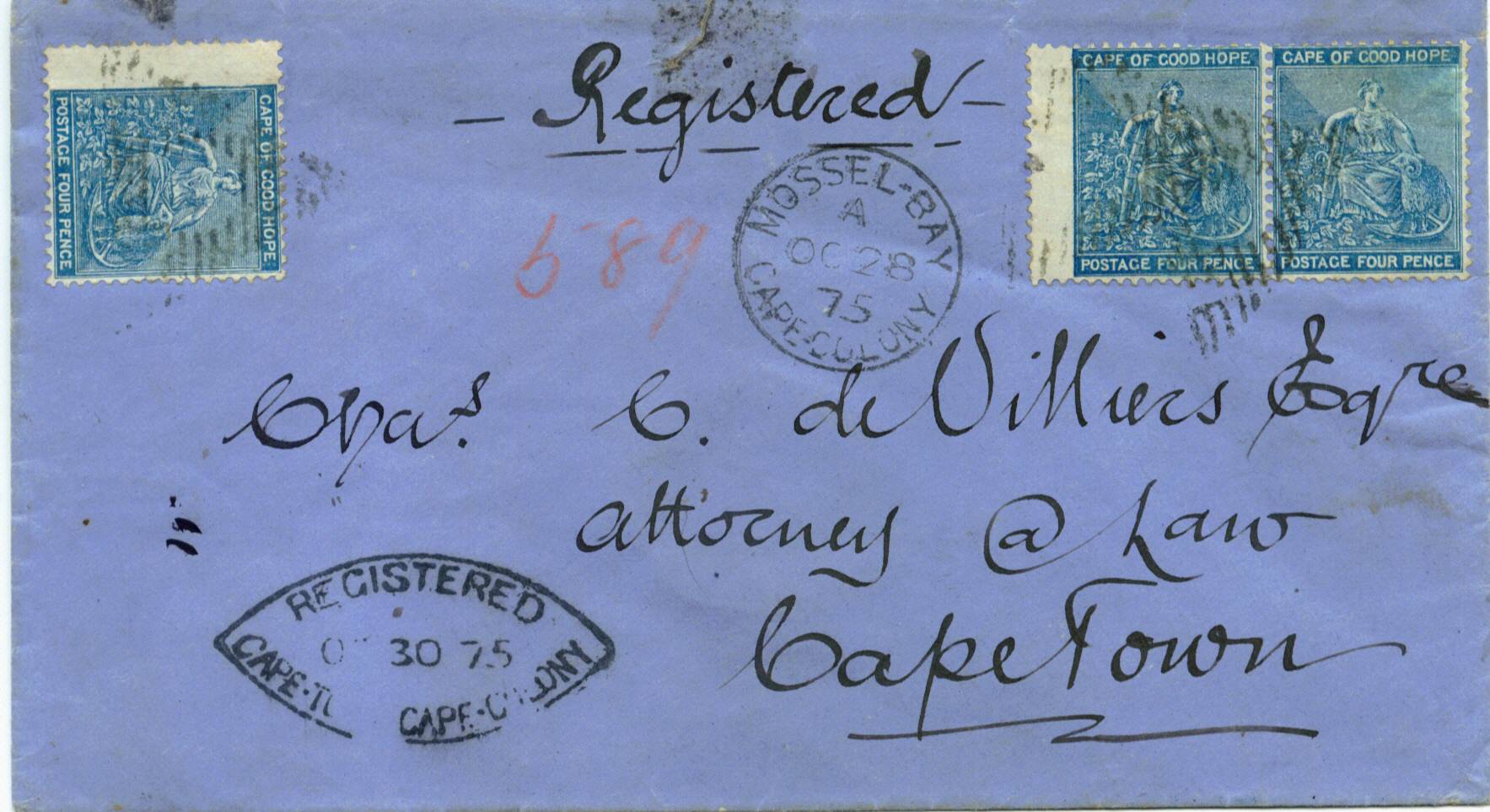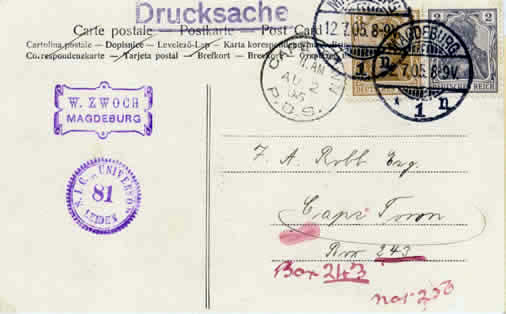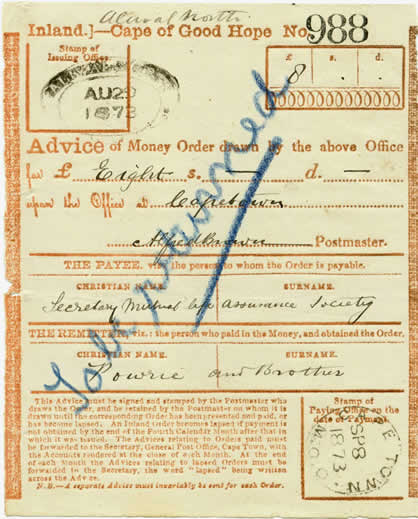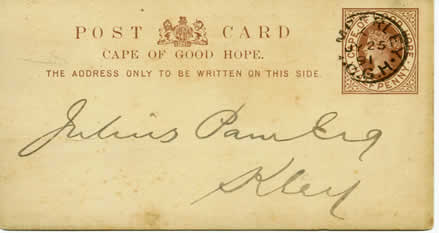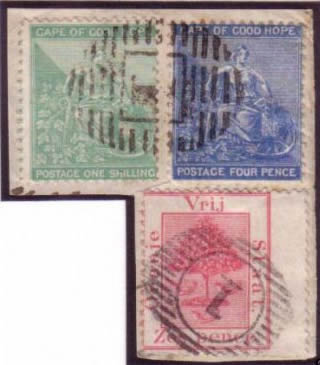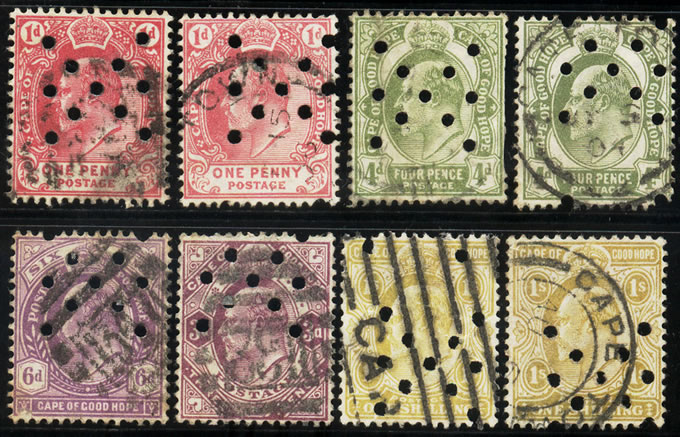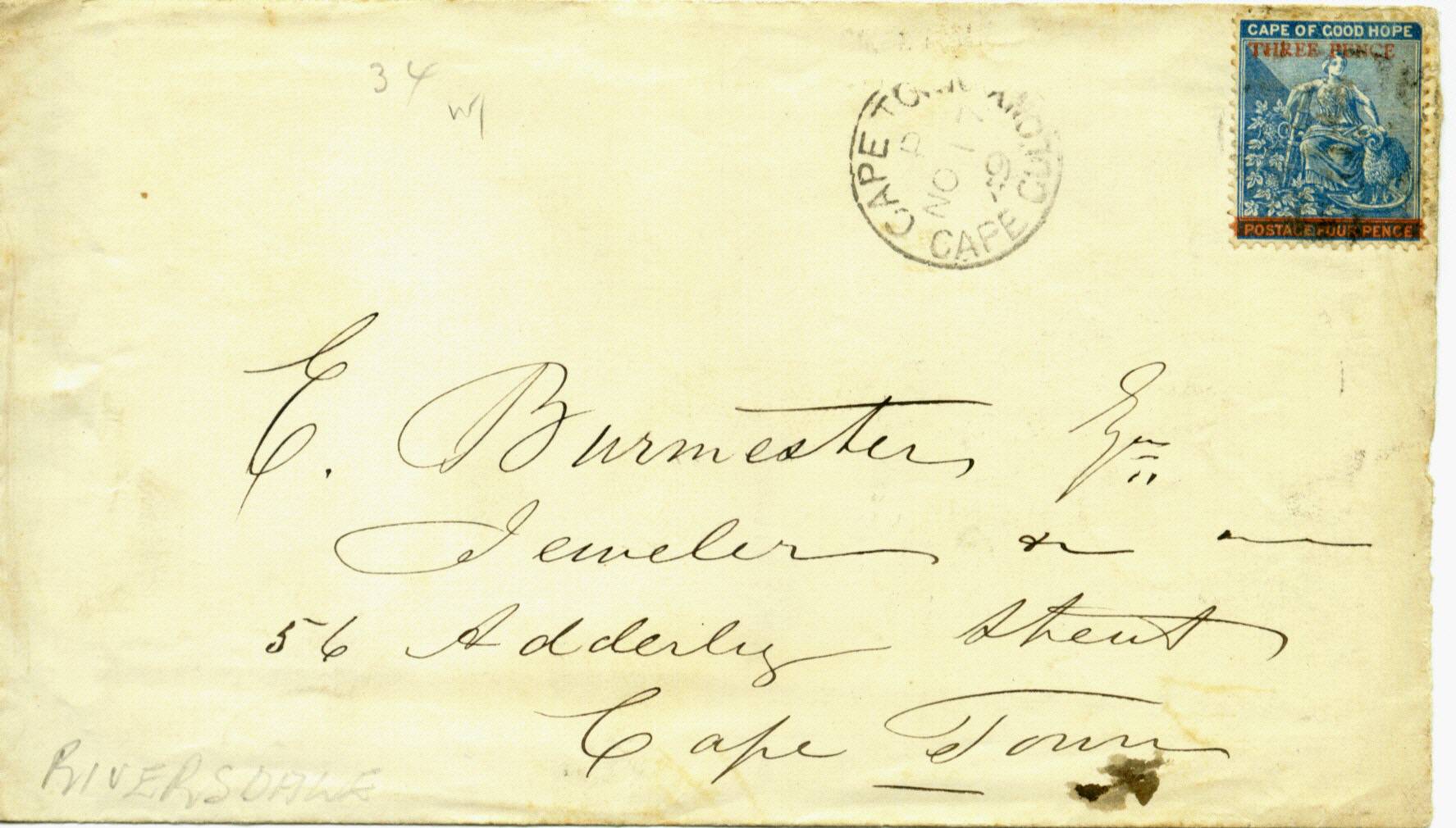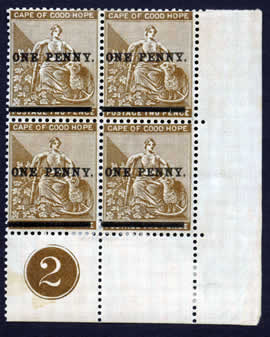Early local correspondence in the Cape of Good Hope was transmitted using letter runners. These were usually Hottentot servants. They wore only a loincloth and could therefore not carry letters on their person. A cleft stick, the so-called briefstock was used for this purpose. The briefstock varied from one to two metres in length and…
Circular Postmarks of the Cape of Good Hope
The first circular datestamps of the Cape of Good Hope were issued in 1864. At first these were only issued to the general Post Office at Cape Town and the Port Elizabeth post office. Over a period of fifty years new and varied designs were issued. This section examines all the designs and variants both…
Parcel Post – Cork Cancellations
Postmasters were required to use the ordinary letterstamps for defacing postage stamps on parcels. Damage often resulted as the hard face of the datestamp cut through the paper wrapping and to prevent this, postmasters and postal agents made their own personal dumb obliterators. Using cork or wood, they cut shapes and designs into the material.…
Registered Letters
Registration of letters appeared early in the Postal History of the Cape of Good Hope. Rhenius proclamation of the 2nd March 1792 provided for the establishment of a postal system at the Cape of Good Hope. This early postal system required that the Postmaster on payment of a fee of four stuivers, would record details…
Private Box Section
The first intimation of a proposed introduction of private post office boxes at the Cape of Good Hope was contained in a report dated 2 May 1853 by the Post Office Enquiry Board.
The Money Order Office
The post office advised the public as early as 1828 that, owing to the great distances the mail was conveyed, it would not accept responsibility for money sent by mail being lost or stolen in transit.
Special Markings of the Cape of Good Hope
The South African and International Exhibition in Kimberley, 1892 The South African and Internatonal Exhibition was staged in Kimberley in 1892. It was opened by Sir Henry Loch, the then Governor of the Cape of Good Hope on the 8th of September. It presented exhibits of art, an exhibition of paintings from the royal collection…
Cape of Good Hope Stamps used in the Orange Free State
Stamps of the Cape of Good Hope on covers or pieces can occassionaly be found. These are normally from the first rectangular issue with the outer line. The majority of them being the four pence blue.
The King Edward VII Stamps of 1902
The relationship of the Cape Colony to the Mother Country was for the first time indicated upon what proved to be the last issue of Cape of Good Hope postage stamps, namely, those which appeared at intervals from 1902 to 1904, bearing as the centre-piece the profile portrait of His Majesty King Edward VII The…
The ‘THREE PENCE’ Overprint 1879
NEW POSTAL RATES CREATE A NEED FOR A THREE PENCE STAMP A notice that appeared in the Government Gazette of 31st October 1879 informed the public that as from the 1st November 1879 the rates of postage on letters posted in the Colony, Basutoland and the Transkeian Territories for transmission to Post Offices within the…
Rectangular Stamps – The Hope Standing
(Issued October 1893) The introduction of the first stamps of the new design, which had been decided upon, was effected in October 1893 with the One Penny value making its appearance. ” Hope ” still continued to be the dominating feature, but having by this time remained seated for upwards of forty years, she now…
1893 One Penny Surcharge
In March 1893 there were placed on sale the last of the provisional stamps issued by the Cape Colony, being the Two Pence value of the Cabled Anchor series overprint locally,-” ONE PENNY ” the value obliterated by a bar. New die in 1893, but delay of the first shipment, to supplement the Treasury stocks…

